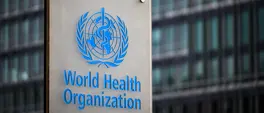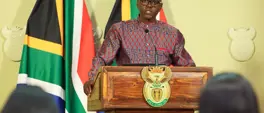OPEC+ countries to open the oil taps despite price slump
AFP
3 May 2025 | 15:35Saudi Arabia, along with Russia and six other members of the oil cartel, will implement a production adjustment of 411,000 barrels a day out of the ground, as in May, according to a OPEC+ statement, whereas the initial plan called for an increase of just 137,000 barrels.
VIENNA, Austria - Eight OPEC+ member countries on Saturday announced a sharp increase in oil production for the month of June at the risk of driving down already very low prices.
Saudi Arabia, along with Russia and six other members of the oil cartel, will implement a production adjustment of 411,000 barrels a day out of the ground, as in May, according to a OPEC+ statement, whereas the initial plan called for an increase of just 137,000 barrels.
Numbering a total of 22 countries, most of which are highly dependent on oil, the group had until recently been exploiting supply scarcity to boost prices, holding millions of barrels in reserve.
"OPEC+ has just thrown a bombshell to the oil market," Jorge Leon, analyst with Rystad Energy, told AFP.
"Last month's decision was a wake up call. Today's decision is a definitive message that the Saudi led group is changing strategy and pursuing market share after years of cutting production," he added.
That about-face will also provide an opportunity to build good relations with Donald Trump's United States, he went on.
Shortly after taking office in January Trump called on Saudi Arabia, which heads the cartel, to up production in order to bring prices down.
Last month the group slightly lowered its forecast for oil demand growth, citing the impact of US tariffs on the world economy.
The Organization of the Petroleum Exporting Countries in 2016 came up with OPEC+ to strengthen their weight on the global market.
In previous years Saudi Arabia, Russia, Iraq, the United Arab Emirates, Kuwait, Kazakhstan, Algeria and Oman had agreed to voluntary additional reductions in production to keep barrels of oil off the market.
But after postponing a return to higher production the eight from April have loosened the valves and have now opened the floodgates.
Price slump
That ramping-up of oil extraction at a time when the market price of crude is at a low -- around 60 dollars a barrel -- could be intended to punish those within OPEC+ who are not respecting quotas, said Arne Lohmann Rasmussen of Global Risk Management.
In particular Kazakhstan has increased its production in recent months and has not paid the required compensation for the excess extraction, said Carsten Fritsch of Commerzbank.
Besides internal tensions, the increase could also be motivated by the desire to stay ahead of the curve on international geopolitics.
While talks on Iran's nuclear programme and a potential truce in the Russia-Ukraine war appear to have foundered, the United States on the other hands could loosen its sanctions against Moscow and Tehran, allowing them to export more barrels.
However the OPEC+ strategy of rapidly ramping-up production could, however, accentuate the nosedive in oil prices.
That could also endanger the American players in the sector, for whom production would no longer be profitable if prices remained below $55 a barrel an extended period, according to SEB analyst Ole Hvalbye, who saw Opec as "testing its pricing power."
Oil prices have nosedived since Trump returned to the White House from a level of around 80 dollars, a barrel to levels unseen since February 2021.
Forecasts for oil demand have been slashed, particularly given the prospect of a trade war ignited by Trump's tariffs between the United States and China -- the world's two largest guzzlers of the black gold.
Get the whole picture 💡
Take a look at the topic timeline for all related articles.












